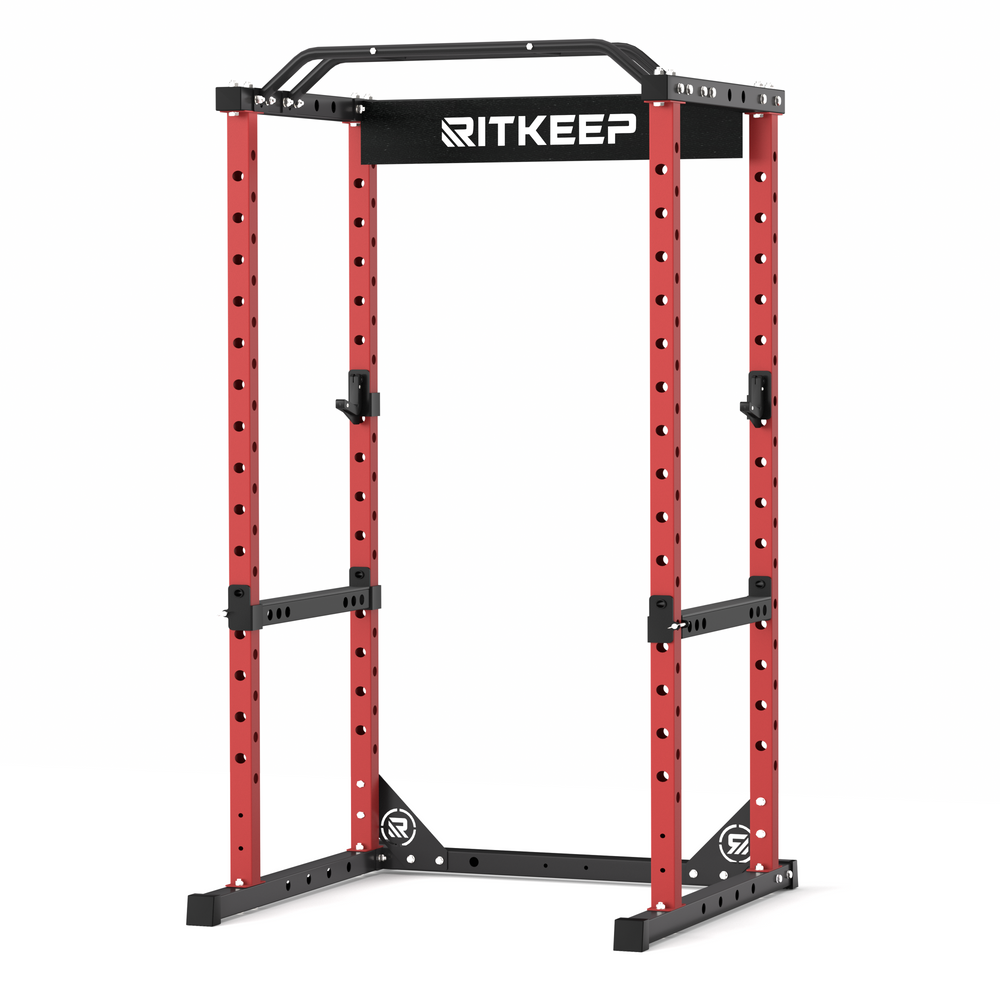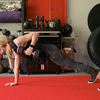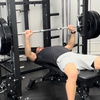Olympic Bar vs Standard bar: Which One ls Right for You?
Choosing the right barbell is one of the most important decisions you'll make when setting up a home gym. The right equipment can make a significant difference when it comes to your training and progress. An Olympic bar vs a standard bar is a key comparison to consider, as both types cater to different fitness needs. Olympic barbells are typically designed for serious weightlifters, while a standard barbell may be more suitable for beginners.
RitKeep is here to break down the differences between the two types of barbells to help you get the best results from your workout.
Brief Description of Both Olympic & Standard Barbell
Before we look at the differences between standard and Olympic barbells, we need to clarify the terminology. The term "standard" barbell is often misunderstood. Many people think of it as a general-purpose barbell without a center knurl (the rough part of the bar that helps improve grip). However, that's not entirely accurate, especially since some manufacturers now offer standard barbells with center knurls. The key distinction between a standard vs. Olympic barbell lies in the size and sleeve diameter.
Olympic bars have surpassed standard bars that were commonly used in most weightlifting facilities. While Olympic bars got their name from being primarily used for Olympic weightlifting, they are now increasingly seen in sports centers, whether commercial gyms or high-performance facilities. Due to their competitive use, these bars have the same length and weight in their male and female versions. The "men's bars" are slightly longer and heavier, able to handle more weight than the "women's bars". The terms "male" and "female" refer to the bars used in competition based on the athlete's gender.
Standard bars, on the other hand, refer to all non-Olympic bars. They can be easily distinguished by their size and shape, as a standard bar usually has the same diameter throughout the grip area and the ends where the weight plates are loaded. In Olympic bars, however, there is a significant difference between the middle grip area and the ends where the weight plates are added.
Olympic Barbell vs. Standard Barbell: A Comprehensive Comparison
Choosing an Olympic barbell versus a standard bar can significantly impact your workout efficiency and goals. We break down the main factors that differentiate the two barbell types, helping you make an informed choice for your training needs.
Olympic Barbell Specs
Length
Olympic barbells typically come in two standard lengths:
- 6 feet, 6 inches (women's bar)
- 7 feet, 2 inches (men's bar)
The Olympic barbell length is used in official competitions, but you can use either bar in your workouts for general fitness. Keep in mind that the Olympic barbell bar weight differs from the standard bar's, with each bar weight based on length and use.
Sleeve Diameter & Rotation
The sleeve diameter of an Olympic barbell ranges from 48 mm to 50 mm (about 2 inches). It's important that the sleeve doesn't exceed 50 mm because most weight plates are bored to this size. If the sleeve is too large, standard plates won't fit, making it unsafe to add weight as you progress.
Additionally, many Olympic bars include ball bearings between the bar and the sleeve to allow smooth rotation. This feature helps lifters move the bar efficiently during exercises like cleans and snatches, reducing stress on the wrists and elbows while improving grip.
Bar Thickness
The thickness of the bar varies between men's and women's Olympic barbells:
- 25 mm (women's bar)
- 28 mm (men's bar)
These thinner bars are designed to facilitate the hook grip, which is crucial for heavy lifting. While regular gym-goers can choose whichever lifting bar feels more comfortable for their grip, if you plan to compete in Olympic weightlifting, powerlifting, or strongman competitions, you'll need to get used to the required bar diameter for that event. Moving from a thinner bar to a thicker one can be challenging if you haven't trained with it.
Weight
There are two standards for olympic bar weights:
- 33 pounds (women's olympic bar weight)
- 45 pounds (men's olympic bar weight)
For regular workouts, you can choose whichever bar suits your needs, but it's crucial to account for the Olympic barbell vs standard barbell weight difference. The extra 12 pounds from a men's bar can impact your training, especially when calculating total lifting weights for exercises like squats or deadlifts.
Barbell Strength
Olympic barbells are rated by their PSI (pounds per square inch) strength, with ranges from below 165,000 PSI to above 190,000 PSI. A higher PSI means a stronger bar, better suited for heavier loads. For most lifters, a 165,000 PSI bar is sufficient, but if you're focusing on powerlifting, a bar closer to 200,000 PSI will offer greater durability for heavier weights.
Knurling
Most Olympic barbells feature center knurling, which helps secure the lifting bar during exercises like back squats. However, with the rise of powerlifting, many manufacturers now offer bars with or without center knurling based on customer preferences. Some lifters prefer bars without center knurling to avoid scraping their shins or necks during lifts like deadlifts or cleans.
Standard Barbell Specs
Length
Standard barbell can varies in length, typically ranging from 3 feet to 7 feet. Standard barbells can even be the same length as women's and men's Olympic barbells (6'6" or 7'2", respectively). However, despite their similar lengths, they aren't designed for the same purposes. Olympic bar vs standard bar usage differs greatly, as we'll explain below.
Sleeve Diameter
Standard barbells have a sleeve diameter of 25 millimeters (1 inch). Unlike Olympic barbells, they don't feature rotating sleeves, and the diameter of the sleeve and the bar itself is the same throughout. This difference makes standard vs Olympic barbell less suitable for exercises like cleans or snatches, which require smooth rotation during weight lifting.
Bar Thickness
Standard barbells are consistently 25 mm thick across their entire length. If you opt for a standard barbell, keep the following in mind:
- You'll need weight plates with a 1-inch hole to fit the sleeve diameter.
- These barbells are not designed for extremely heavy lifts or advanced weightlifting movements.
- They are not suited for Olympic lifts, where the bar needs to rotate or your grip needs to adjust mid-movement.
Weight
Unlike an Olympic weightlifting bar, which has a set weight (33 lbs for women and 45 lbs for men), standard barbells can weigh anywhere between 11 pounds and 22 pounds, sometimes more. There are no strict weight guidelines for standard bars, which makes the Olympic barbell vs standard comparison crucial, especially for lifters looking for consistency in their equipment.
Barbell Strength
Due to their thinner diameter, standard barbells have significantly lower PSI ratings compared to Olympic bars. A standard barbell may only support up to 200 pounds before bending or breaking. While this might be sufficient for beginners, more advanced lifters will quickly surpass this weight threshold and need to upgrade to a stronger bar, making it important to understand the differences in Olympic bar vs standard bar weight and strength.
Cost Analysis: Olympic vs Standard Barbell
Olympic barbells carry a higher price than standard barbells. This results from the high-quality materials used and the many production processes it undergoes. One of these is the case hardening heat treatment mentioned above.
But Olympic barbells offer value for the money. The hardening and straightening that they undergo improves their strength and longevity. However, the standard barbell might be more cost-effective if you're looking for a simple barbell to do lightweight training around your house.
Why Professional Lifters Prefer Olympic Barbells
Professional lifters prefer Olympic barbells because they offer many benefits and advantages in competitive scenarios. Using the wrong bar could contribute to failure. They meet competitive standards and will perform better when you powerlift with them. They support the rotational movements you'll need to do and have the right load-bearing capacity.
Olympic barbells also come with aggressive knurling, which is recommended for professional lifting as it offers a better grip. Medium knurls are better for functional training, CrossFit, and compound lifts. The center knurling on Olympic barbells also helps maintain your grip when lifting your shoulders or in the front rack position.
Making an Informed Choice
The advantage of the Olympic barbell set is that its materials are of higher quality to meet the mandatory Olympic requirements. This feature allows for much greater weight capacity compared to a standard barbell, which can easily bend if exceeded. When purchasing an Olympic barbell, one of the factors that determines its price is the maximum weight we can lift with it: the higher the weight capacity, the higher the price.
The advantage of the standard barbell is that it is much cheaper than Olympic barbells. Because the Olympic barbells used in the competition are more expensive than his because they have to pay the certification fees of the competition, especially when considering mid-range and high-end options. Although the price difference is explained by the quality of materials, durability, and functionality, a standard barbell is more than sufficient if we are beginners in strength training and simply want to lift some weight in the gym. If you are lifting heavy weights and want to carefully control the progression of your load, an Olympic barbell would be a better choice.
In CrossFit gyms and any sports facility where Olympic weightlifting is performed, the use of Olympic barbells is virtually mandatory. The same applies to powerlifting competitions, where the goal is to lift the maximum weight for a single repetition in squat, bench press, and deadlift. In these disciplines, every detail is taken into account, and the fact that an Olympic barbell allows rotation at the ends while a standard barbell does not is the main difference that leads to choosing the Olympic barbell.
Individuals who train for strength with the goal of getting fit and building muscle mass may not necessarily need the best barbell or even an Olympic barbell, although, in general terms, it will always be the better option. These recreational strength training enthusiasts may not notice whether the ends rotate or not because their movements do not generate as much kinetic energy to test it. However, for beginners, the rotating sleeves on Olympic barbells can sometimes be tricky. If you're not used to stabilizing the bar during dynamic movements, the rotation of the plates can feel unpredictable, especially during exercises like bench press or overhead press. In these cases, the choice between using an Olympic barbell or a standard barbell in their training sessions is a personal preference. However, for more advanced individuals in strength training and certainly for athletes who perform Olympic weightlifting, the balance should always tilt towards the Olympic barbell.
Quality Matters: Tips for Buying Barbells
Whether you're choosing the Olympic or standard barbell, here's a general checklist for quality assurance. It also includes common pitfalls to avoid when purchasing a good barbell.
- A good barbell will have a PSI rating of over 165K. This measure is an indication of how strong the barbell's metal is. A weak barbell will bend permanently with too much weight.
- If you get a chance, give your barbell sleeves a spin. It should take at least 3 seconds to stop spinning. If buying online (checkout ours), examine the bushings or bearings. Bearings are fine (especially needle bearings), but bushings should be bronze at best or composite for quality reasons.
- There are better ideas than a raw steel barbell if you live near the coast or in a humid area. If you must get one, then dry it off after use and keep it in a sealed container. You can also lightly wipe it with an oil coating once every month to keep it furnished.
- Warranty is another detail to consider; generally, the longer the warranty, the better the quality. You want to get at least a year's warranty on your barbell. This is the standard point that guarantees a good return on your investment.
Conclusion
Deciding between an Olympic barbell and a standard barbell is a personal choice influenced by several factors. Nevertheless, the Olympic barbell consistently outperforms expectations in is a good choice for almost every single situation. This versatile bar suits strength training, bodybuilding, and professional lifting. On the other hand, the standard barbell is a more economical option that allows you to allocate your budget toward other equipment. However, it may not support lifting loads exceeding 200 lbs. Before making a purchase, prioritize quality and carefully consider your short-term and long-term fitness goals.
Choosing the best barbell for home gym is a careful choice, in general, your preferences, training needs, and budget will determine the bar you end up with. However, we honestly never recommend a standard barbell to anyone. It is just unlikely to meet your needs over time and handicaps you ability to do certain movements. If you ask us, the proud owner of a home gym should also be the proud owner of a quality olympic barbell.
Best Home Gym Gear in RitKeep
These are our most popular home gym machines — combining Smith Machine and Power Rack in one. Perfect for both guided and free weight training to support your everyday fitness goals.
PMAX 5600 All-In-One Smith Machine - Integrated Weight System
✔️ 6 IN 1 Gym Station
✔️ With 320 LB Weight Stack On Each Side
✔️ Feel the Burn Through 80+ Exercises
PMAX 4750 Dual Plate Loaded Multi Functional Smith Machine
✔️ Fuel Your Workout with 100+ Exercises
✔️ Dual Independent Pulley System
✔️ Removable Jammer Arms & Leg Extension
Destroyer M10 ALL-IN-ONE Home Gym Power Rack With Pulley System
✔️ Crossover Cable Pulley System
✔️ Heavy-Duty Multi-Functional Rack
✔️ Offering over 80+ exercises

















